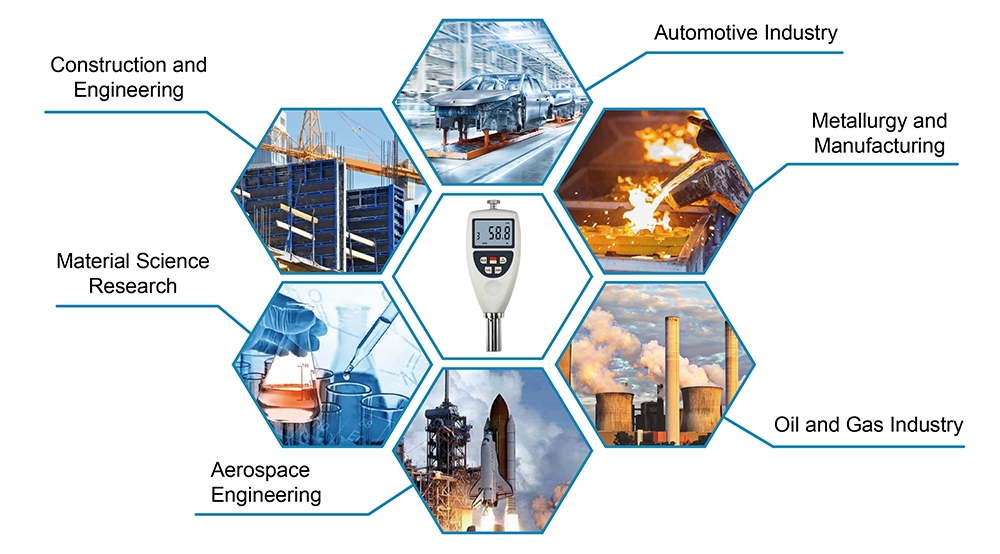A hardness tester is an essential tool in various industries and applications, aiding in determining the hardness of materials. Hardness is a vital material property that reflects its resistance to deformation, wear, and scratching. Different materials require different hardness levels based on their intended use. By measuring hardness, engineers can assess material quality, make informed decisions for material selection, and ensure product reliability. This article explores the diverse applications of hardness testers across different sectors.

- Metallurgy and Manufacturing. In the field of metallurgy, hardness testers play a pivotal role in quality control and material characterization. Manufacturers use hardness tests to assess the strength and durability of metal components such as gears, shafts, bearings, and tools. For instance, the Brinell hardness test involves indenting a material's surface with a hardened steel ball and measuring the diameter of the resulting impression. This method is commonly employed for testing castings and forgings, ensuring they meet the required hardness specifications.
- Automotive Industry. In the automotive sector, portable hardness testers are used to evaluate the hardness of critical components like engine parts, brake systems, and transmission components. Ensuring optimal hardness levels in these parts is essential for their longevity and performance. Hardness tests help manufacturers identify materials prone to wear and tear, leading to improved vehicle safety and reliability.
- Aerospace Engineering. The aerospace industry demands materials with high strength and durability due to extreme conditions experienced during flight. Hardness testing is used to examine aircraft components such as turbine blades, landing gear, and structural elements. By accurately determining hardness, engineers can prevent failures caused by excessive stress, fatigue, or corrosion, ensuring the safety of air travel.
- Construction and Civil Engineering. In construction, hardness testers are employed to assess the quality of building materials like concrete and asphalt. The rebound hammer test, a non-destructive method, measures the surface hardness of concrete structures, providing insights into their compressive strength and durability. This information is vital for maintaining the structural integrity of buildings, bridges, and roads.
- Material Science Research. Hardness testing is fundamental in material science research and development. Scientists use it to study the behavior of newly developed materials, alloys, and composites. By analyzing the relationship between hardness and other mechanical properties, researchers gain insights into a material's potential applications in various industries, from electronics to medical devices.
- Quality Control in Electronics. The electronics industry relies on hardness testing to ensure the reliability and performance of components like microchips, connectors, and circuit boards. Proper hardness levels are crucial to prevent damage caused by mechanical stress or thermal expansion. Hardness testers aid in identifying materials susceptible to deformation or cracking under the conditions these components experience.
- Oil and Gas Industry. The oil and gas sector often deals with harsh and corrosive environments. Hardness testers are utilized to evaluate the hardness of pipeline materials, drilling equipment, and refinery components. This ensures that these materials can withstand the stresses imposed by drilling, transportation, and processing of oil and gas resources.
Hardness testers find applications across a wide range of industries, playing a crucial role in material characterization, quality control, and product reliability. From manufacturing and aerospace to construction and medical devices, these instruments enable professionals to make informed decisions about material selection, design, and maintenance. As technology advances, hardness testing methods continue to evolve, enhancing their accuracy and usability in various sectors.

